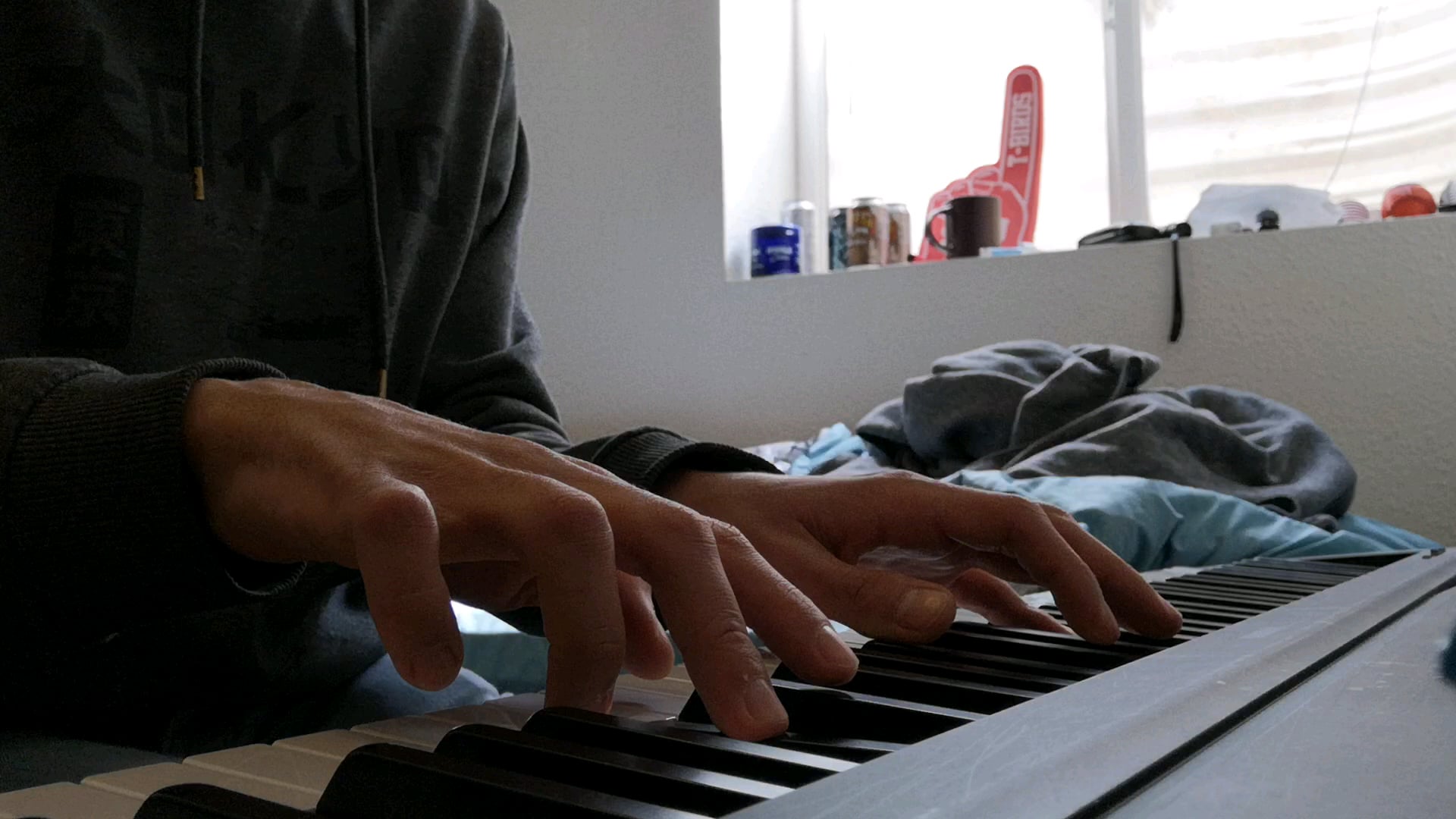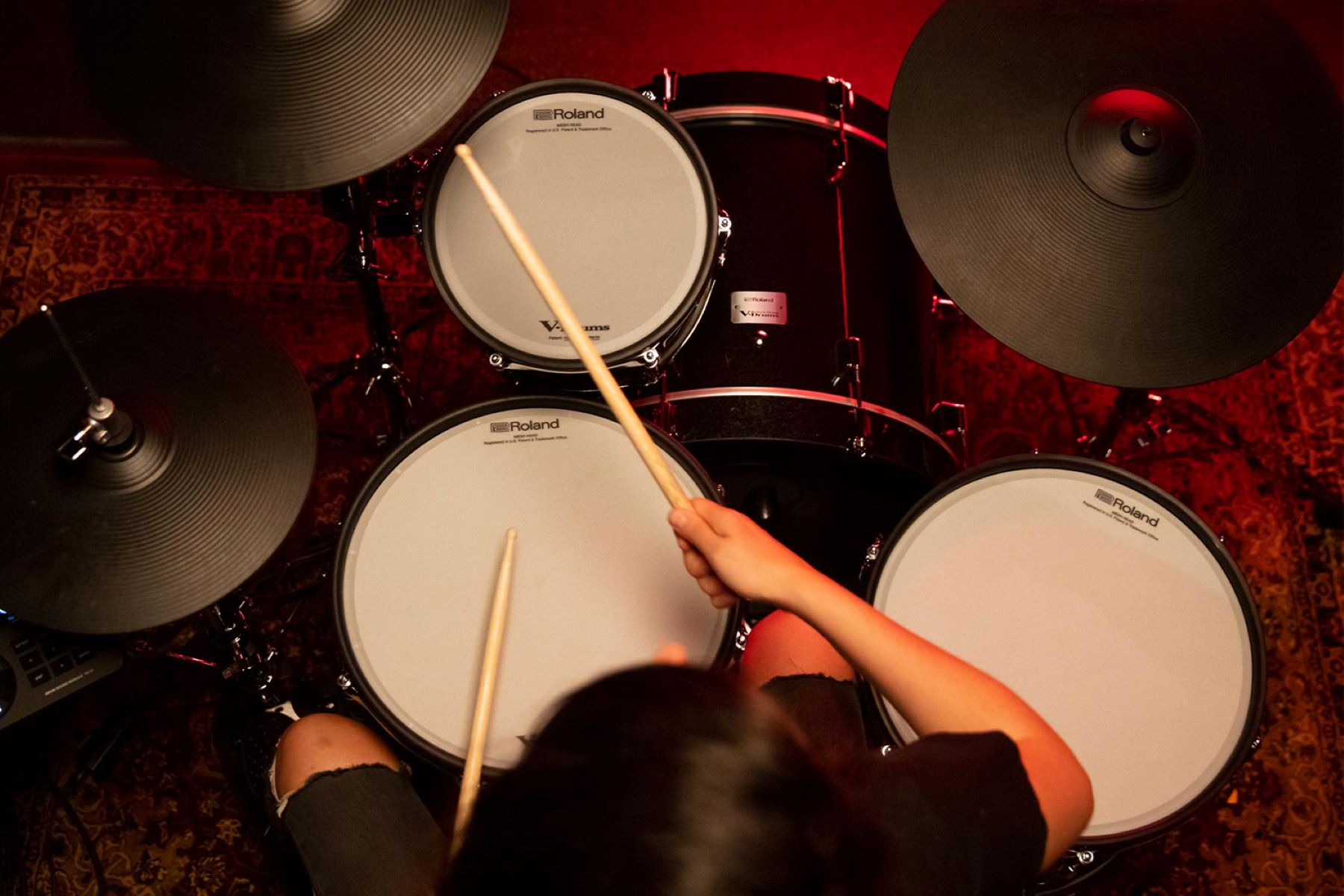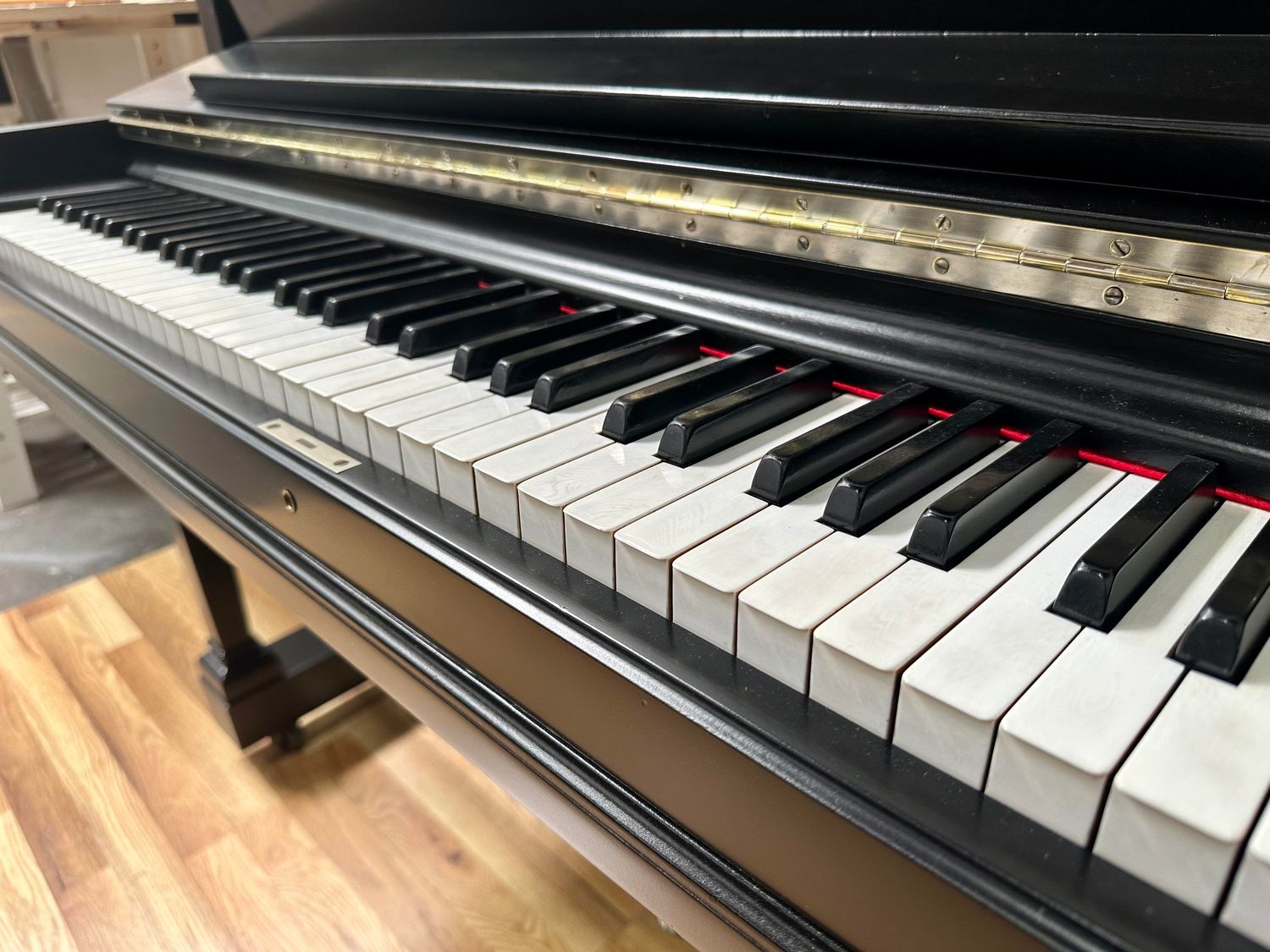Home>Instruments>Piano>How To Play Piano Songs Easily


Piano
How To Play Piano Songs Easily
Published: February 11, 2024
Learn how to play piano songs easily with our step-by-step guide. Master the art of playing piano and impress your friends and family. Perfect for beginners and intermediate players.
(Many of the links in this article redirect to a specific reviewed product. Your purchase of these products through affiliate links helps to generate commission for AudioLover.com, at no extra cost. Learn more)
Table of Contents
Introduction
Playing the piano is a delightful and fulfilling endeavor that allows individuals to express their creativity and emotions through music. Whether you're a beginner or have some experience with the instrument, mastering the art of playing piano songs can be an incredibly rewarding journey. In this comprehensive guide, we will explore various techniques and strategies to help you play piano songs with ease and confidence.
Learning to play piano songs can seem daunting at first, especially for those new to the instrument. However, with dedication, patience, and the right approach, you can make significant progress and enjoy the process along the way. From understanding basic piano chords to adding rhythm and dynamics, each aspect contributes to creating a captivating musical performance.
Throughout this guide, we will delve into the fundamental elements of playing piano songs, including mastering simple melodies, utilizing chord inversions, and infusing your playing with rhythm and dynamics. By the end of this journey, you will have gained valuable insights and practical techniques to enhance your piano playing skills and approach songs with a newfound sense of confidence and proficiency.
So, whether you're looking to impress your friends with a captivating piano performance, express your emotions through music, or simply enjoy the beauty of playing piano songs, this guide is the perfect starting point for your musical exploration. Let's embark on this enriching journey and unlock the secrets to playing piano songs with ease and finesse.
Understanding Basic Piano Chords
At the heart of playing piano songs lies a fundamental understanding of chords. Chords are the building blocks of music and provide the harmonic framework for melodies and compositions. As a pianist, familiarizing yourself with basic piano chords is essential for navigating through various songs and creating harmonic richness in your playing.
Begin by acquainting yourself with the foundational chords in music, including major and minor chords. Major chords convey a sense of brightness and positivity, while minor chords evoke a more somber and introspective mood. Understanding the structure of these chords and how they are formed on the piano keyboard is a crucial first step in your musical journey.
As you delve deeper into the world of piano chords, you will encounter seventh chords, suspended chords, and extended chords, each adding its unique color and flavor to your musical palette. Learning to identify and play these chords fluently will significantly expand your ability to interpret and perform a wide range of songs.
Furthermore, mastering chord progressions is essential for creating a sense of movement and direction in your playing. Progressions such as the timeless I-IV-V or the emotive vi-iv-I-V can be found in countless songs across various genres, serving as the backbone of musical compositions.
By developing a solid grasp of basic piano chords and their applications, you will lay a strong foundation for interpreting and playing a diverse repertoire of songs. Whether you’re drawn to classical masterpieces, contemporary pop hits, or soul-stirring jazz standards, the knowledge of chords will empower you to infuse your playing with depth and emotion.
As you continue your musical journey, remember that mastering piano chords is not merely an academic exercise but a gateway to unlocking the expressive potential of the instrument. With dedication and practice, you will find yourself effortlessly navigating through chord progressions and enriching your piano songs with harmonic beauty and sophistication.
Mastering Simple Melodies
Playing captivating melodies on the piano is a delightful art that allows you to convey emotions and tell musical stories. Whether you’re interpreting a timeless classical piece or a contemporary pop melody, mastering simple melodies is a foundational skill that forms the essence of piano playing.
Begin by familiarizing yourself with the layout of the piano keyboard and understanding the concept of scales. Scales serve as the raw material for creating melodies and provide a framework for navigating the musical terrain. Whether it’s the familiar C major scale or the expressive A minor scale, exploring these foundational patterns will enhance your understanding of melody construction.
As you delve into the realm of melodies, pay attention to phrasing and expression. The way you shape and articulate each note contributes to the overall musical narrative. Experiment with dynamics, using variations in volume to infuse your melodies with depth and emotion. Additionally, explore the use of sustain pedal to create a seamless and resonant sound, adding a layer of richness to your playing.
Furthermore, studying iconic melodies from various musical genres can provide valuable insights into crafting compelling piano lines. Whether it’s the haunting simplicity of a classical theme or the infectious hook of a pop song, analyzing and learning these melodies can inspire and inform your own musical explorations.
Remember, mastering simple melodies is not merely about playing the correct notes; it’s about infusing each note with intention and emotion. As you immerse yourself in the world of melodies, allow your creativity to flourish, and let your interpretations reflect your unique musical voice. With dedication and a keen ear for detail, you will find yourself effortlessly weaving enchanting melodies on the piano.
Using Chord Inversions
Chord inversions are a powerful tool that can elevate your piano playing to new heights, adding richness and variety to your harmonic palette. Understanding and utilizing chord inversions allows you to create smooth and seamless transitions between chords, adding a sense of fluidity and sophistication to your playing.
Begin by grasping the concept of chord inversions, which involve rearranging the notes of a chord to create different voicings while retaining the same harmonic identity. Inversions offer a fresh perspective on familiar chords, enabling you to explore diverse tonal possibilities and create captivating progressions.
One of the primary benefits of chord inversions is their ability to facilitate smooth voice leading, allowing individual notes within chords to transition effortlessly to the subsequent chord. This results in a seamless and melodious flow, enhancing the overall musical expression and creating a sense of cohesion within your playing.
As you delve into the world of chord inversions, experiment with incorporating them into your practice sessions and musical interpretations. Whether you’re playing a poignant ballad or an upbeat jazz standard, utilizing inversions can breathe new life into familiar progressions, adding depth and nuance to your musical performance.
Furthermore, exploring the concept of root position, first inversion, and second inversion chords will expand your harmonic vocabulary and provide you with a broader range of expressive possibilities. Each inversion offers a unique sonic character, allowing you to tailor your chord voicings to suit the mood and atmosphere of the music you’re interpreting.
By integrating chord inversions into your playing, you will discover a newfound sense of freedom and creativity, enabling you to craft compelling and sophisticated harmonic landscapes. Embrace the journey of exploring inversions, and allow their transformative influence to shape your piano playing with elegance and artistry.
Adding Rhythm and Dynamics
Infusing your piano playing with compelling rhythm and expressive dynamics is essential for bringing your musical interpretations to life. By mastering the art of rhythm and dynamics, you can imbue your performances with vitality, emotion, and a sense of narrative depth.
Begin by exploring various rhythmic patterns and time signatures, understanding how different rhythms can shape the feel and groove of a piece. Whether it’s the infectious swing of jazz, the driving pulse of rock, or the graceful waltz rhythm, each style presents unique rhythmic opportunities to explore and integrate into your playing.
Furthermore, pay attention to dynamics, which encompass the variations in volume and intensity throughout a musical piece. From delicate pianissimo passages to thunderous fortissimo climaxes, dynamics allow you to convey a wide spectrum of emotions and moods, adding a dynamic arc to your musical storytelling.
Experiment with articulation and phrasing, using techniques such as staccato, legato, and accents to shape the rhythmic and melodic contours of your playing. Additionally, leverage the expressive potential of the sustain pedal to create lush and resonant soundscapes, adding a layer of depth and continuity to your performances.
As you delve into the realm of rhythm and dynamics, consider the interplay between these elements and how they contribute to the overall musical expression. A well-crafted balance of rhythm and dynamics can transform a simple melody into a captivating narrative, drawing the listener into the emotional landscape of the music.
Whether you’re interpreting a classical masterpiece, a contemporary pop ballad, or an evocative jazz composition, embracing rhythm and dynamics will elevate your piano playing to new heights of artistry and expression. Embrace the rhythmic pulse and dynamic nuances of each piece, allowing your interpretations to resonate with energy, emotion, and a profound sense of musical storytelling.
Conclusion
Congratulations on embarking on this enriching journey to master the art of playing piano songs with finesse and confidence. Throughout this guide, we have explored essential techniques and strategies that form the foundation of captivating piano performances. From understanding basic piano chords to infusing your playing with rhythm, dynamics, and expressive nuances, each aspect contributes to creating a compelling musical narrative.
As you continue your musical exploration, remember that playing piano songs is not merely a technical pursuit but a deeply expressive and emotive art form. Embrace the nuances of each melody, the richness of each chord, and the rhythmic pulse that breathes life into your interpretations. Allow your unique musical voice to shine through, infusing each note with intention, emotion, and storytelling prowess.
Furthermore, approach your practice sessions with dedication and a spirit of curiosity, allowing yourself to explore the boundless possibilities that the piano offers. Whether you’re drawn to classical compositions, contemporary hits, jazz standards, or your original creations, the techniques and insights gained from this guide will serve as invaluable tools in your musical arsenal.
Lastly, remember that the journey of mastering piano songs is a continuous and rewarding pursuit. Embrace the process, celebrate your progress, and relish the joy of bringing music to life through your playing. With each practice session and performance, you are refining your craft and nurturing a profound connection with the instrument and the music you create.
As you apply the knowledge and techniques gleaned from this guide, may your piano playing continue to inspire, uplift, and resonate with the beauty of musical expression. Whether you’re performing for an audience or savoring the music in the intimacy of your practice space, let the melodies and harmonies flow from your fingertips with grace, passion, and the unmistakable imprint of your musical artistry.











